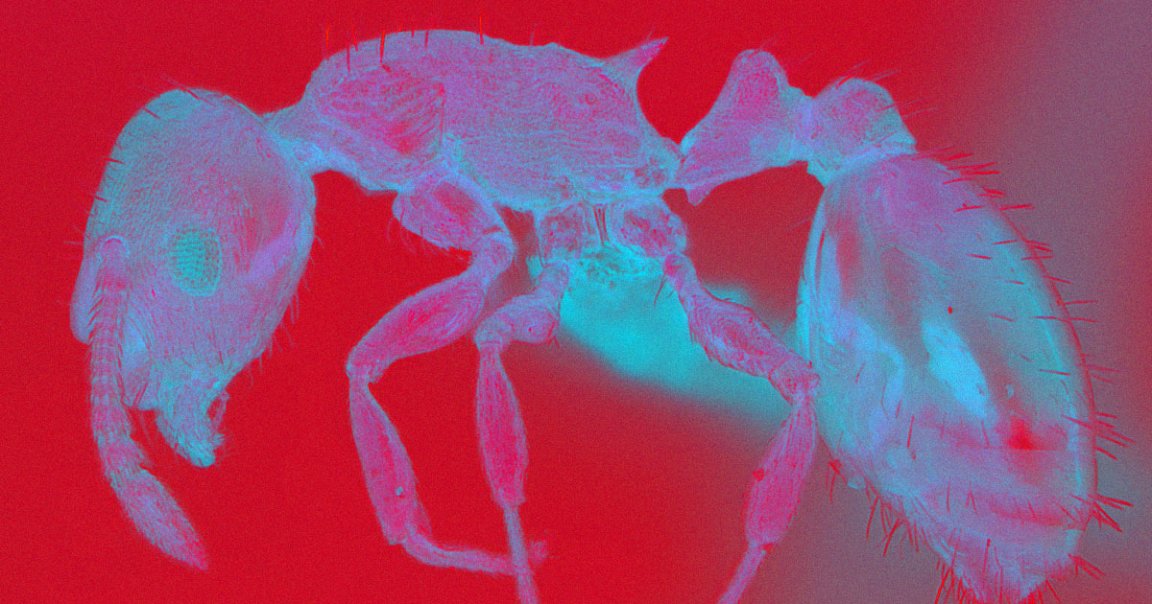
Life of Luxury
A team of German scientists has discovered the possible mechanism of how a parasitic tapeworm can allow a certain species of ants to live substantially longer when infected.
As detailed in a yet-to-be-peer-reviewed paper, the researchers found that when the tapeworm Anomotaenia brevis takes up residence inside these ants, it sends antioxidants and other proteins throughout their bodies — which could play a role in why they can live more than three times as long as ants that aren’t infected.
In addition, the ants are teeming with another interesting protein after infection called vitellogenin-like-A, which “regulates division of labour,” according to the scientists.
This may explain weird behavioral changes amongst the insects, with worker ants now having to look after their infected peers, an unfortunate new occupation that could cause them to live even shorter lives.
“For the infected individuals themselves it seems positive,” Juliane Hartke, a member of the research team, told New Scientist last week. “They don’t need to do anything; they’re still being fed, but what we do see is that the whole colony suffers.”
Sneaky Sneaky
Interestingly, the ants are actually an intermediary host for the tapeworms, which ultimately end up in the bodies of woodpeckers where they mature into adults, according to the scientists.
First, ants bring woodpecker poop teeming with tapeworm eggs to the colony and feed them to ant larva. Then, these infected ant larva mature into adult ants.
The tapeworm eggs inside these infected ants hatch and enter the larva stage of development. This is when the tapeworm larva sends antioxidants and other proteins through the ant’s body, potentially allowing it to live a longer life.
Infected ants can live up to seven years, while uninfected ants can die within a three-year period, according to the researchers.
Meanwhile, the infected ants are fed and groomed by the uninfected, effectively living a life of luxury.
But the infected ants rarely move even when their nests are disturbed, making them sitting ducks for hungry woodpeckers.
The woodpeckers gobble up the infected ants and the tapeworm larva hitch a ride inside the birds, where they mature. The birds excrete poop with tapeworm eggs which ants carry back to their nests, starting the process all over again.
The scientists described the changes in the ant as a possible case of “active manipulation” by the tapeworm — a fascinating glimpse into the life cycle of parasites and their ingenious ways of infecting new hosts.
More on insects: 27-Year Study Finds the Amount of Insects Flying in the Air Has Declined 75 Percent